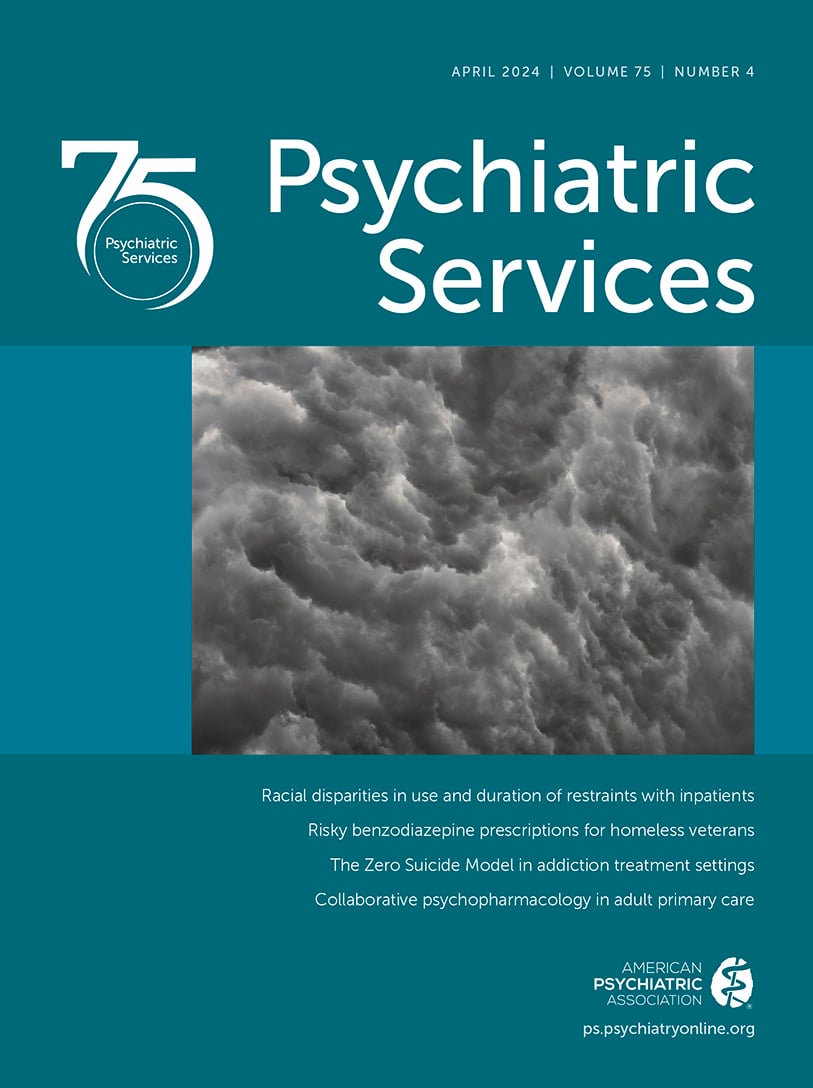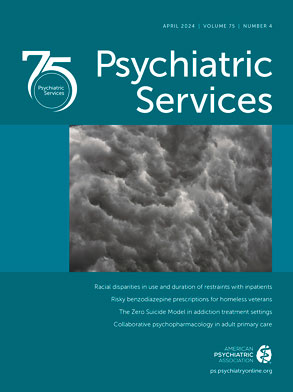Evidence in the United States is mounting that the roles of police and clinicians are often blurred. Police have become de facto first responders in behavioral health crises, leading to hundreds of people injured or killed in recent years, and clinicians can direct involuntary hospital admissions and forced physical restraints to coerce and control patients. This blurring of roles has disproportionately affected people with complex medical conditions, including severe mental illness; people who are Black; and people at the intersection.
In this issue, Singal and colleagues (
1) build on this literature by examining racial-ethnic inequities in the frequency and duration of restraints among 29,739 patients in an inpatient psychiatric facility from 2012 to 2019. The authors found that Black and multiracial patients experienced more and longer restraint events than White patients experienced.
Singal and colleagues discuss two possible explanations for these inequities. The first concerns inpatient staff’s perceptions of Black patients as more aggressive and dangerous, possibly leading to higher rates of restraint. The second is pain perception bias against Black patients, possibly leading to longer restraint durations. Both explanations are plausible and would reflect historically entrenched practices of racialized carceral control that have existed within and outside the health care system.
Other factors may also explain the authors’ findings. First, Black patients are more likely to be hospitalized against their will and to arrive at the hospital via law enforcement transport. These factors might affect risk perception among staff and influence treatment plans in ways that are not well received by patients, increasing the potential for conflict. Second, diagnosis of schizophrenia is fraught with pervasive racial bias. This diagnosis, which the authors controlled for in their analyses, has been associated with restraint use, possibly because of agitation of people with schizophrenia and racially inflected bias in the perception of behaviors resulting from the condition. Third, the authors controlled for risk of violence at admission with the Dynamic Appraisal of Situational Aggression score, which likely captured true risk differences and bias in risk perception, contributing to an underestimation in inequities. Fourth, research shows that Black patients are more likely to arrive at the hospital sicker and with more severe symptoms—a reality that is created and exacerbated by inequitable health care and social resources in the community. Finally, because of its focus on one system, this study could not account for relegating Black patients to low-quality facilities, which has been shown to contribute to racial inequities in care beyond interpersonal bias within hospitals.
Mapping these mechanisms suggests opportunities for action. First, deficiencies in data interfere with improving inpatient psychiatric care. National measures of psychiatric restraint use capture only facility-level summary rates of duration, and facilities’ inclusion of chemical restraint practices is unclear. Errors have also been noted in these data. Without granular, patient-level data, monitoring trends in restraint inequities becomes impossible. We thus applaud Singal and colleagues for modeling frequency and duration of restraint separately and including both chemical and physical restraints, using novel electronic health record data. Second, given that evidence-based models to reduce restraint, violence, and trauma within institutional settings are anchored in trauma-informed and patient-centered care principles, payers and regulators should consider methods to support implementation of these models. Third, work is needed to address inequities in access to preventive and early-intervention services in the community, which could reduce involuntary hospitalization risk among Black patients.
Singal and colleagues have contributed to our understanding of how racial health inequity and injustice can affect inpatient psychiatric care. Researchers would do well to follow their lead and identify other mechanisms through which racially inequitable practices can replicate themselves within and across medicine and other coercive social institutions. Only with a complete, holistic understanding of these dynamics will clinicians be able to care for patients fairly and humanely—and to disentangle themselves from the harmful racialized practices that have characterized the U.S. carceral state.

